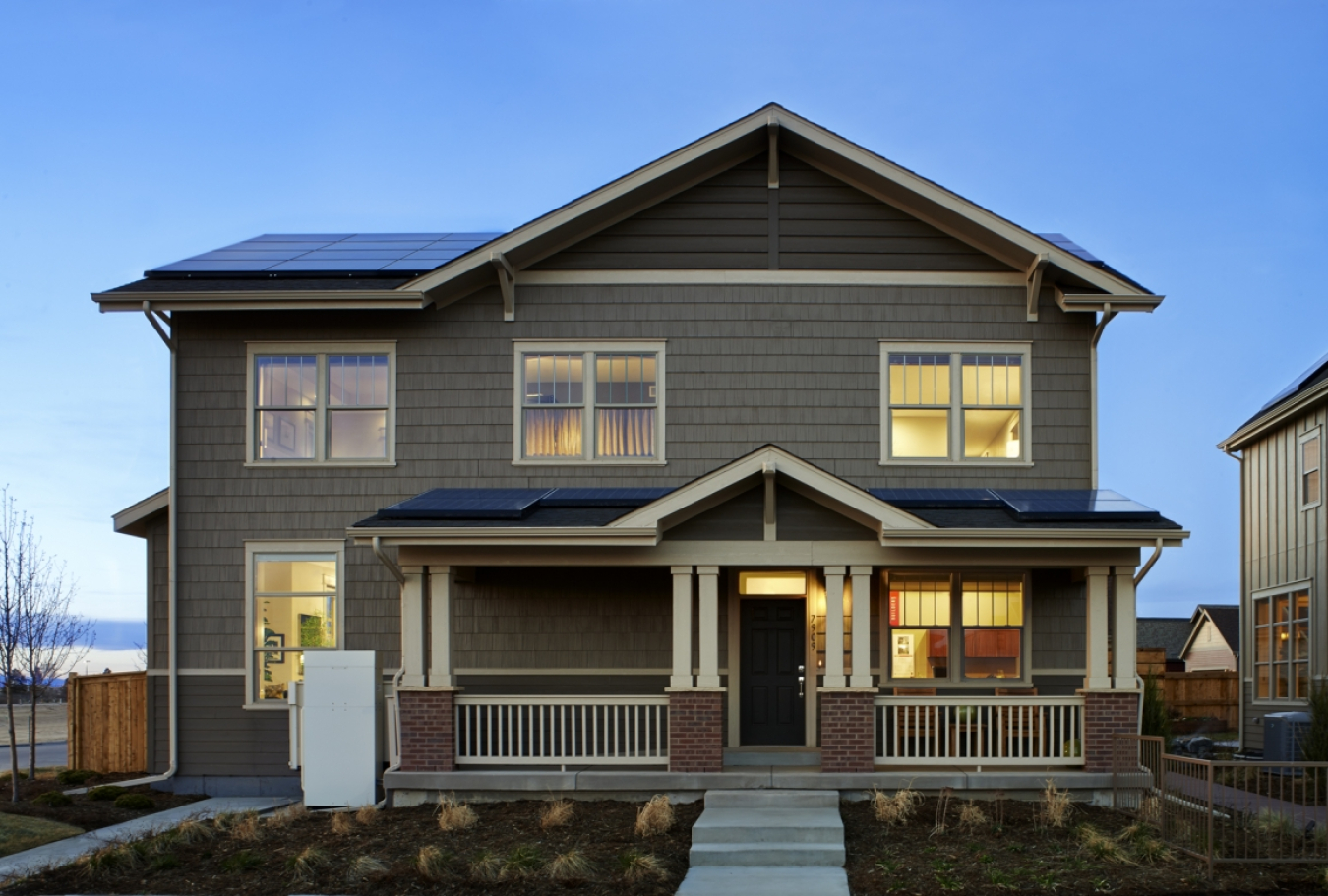Sam Rashkin, the Building Technologies Office’s (BTO’s) chief architect, spoke at the 19th Annual Congressional Renewable Energy and Energy Efficiency EXPO and Policy Forum on July 12, 2016.
August 9, 2016
New Town Builders built this 2,115-square-foot home in Denver, Colorado, to the performance criteria of the U.S. Department of Energy Zero Energy Ready Home (ZERH) program. The project won a 2015 DOE Housing Innovation Award. Photo courtesy of New Town Builders.
Sam Rashkin, the Building Technologies Office’s (BTO’s) chief architect, spoke at the 19th Annual Congressional Renewable Energy and Energy Efficiency EXPO and Policy Forum on July 12, 2016. The Expo consisted of Congressional and administration speakers, topical panels, and an exhibition bringing together almost 50 businesses, trade associations, and government agencies to showcase renewable energy and energy efficiency technologies. Rashkin opened the Sustainable and Net-Zero Energy Buildings panel to discuss BTO’s Zero Energy Ready Home initiative.
At its simplest, Rashkin likened the confidence of purchasing a zero energy ready home (ZERH) to your Uncle Max, who is the best car mechanic you know, informing you which car is the very best value. Like purchasing a car, a home is the largest purchase of a lifetime and is overwhelming. With a ZERH, you have the leading experts in housing saying this is the best house you can buy. A ZERH is one so energy efficient that a renewable energy system can offset most if not all of its annual energy consumption. Rashkin explained that at its foundation, every Zero Energy Ready Home includes seven must-have systems:
- Optimized Thermal Protection System: ZERHs are built better than the current code; they are built future-ready. As one of the largest investments of your life, you want your house to be built for the future and built to future code, and that is exactly what ZERHs do. The building envelope, roof, walls, and windows are all built to higher standards than current building codes require.
- Whole-Home Water Protection System: Moisture is one of the most significant concerns U.S. homeowners face. It is therefore addressed right away in the planning and building process of ZERHs, giving homeowners peace of mind with a comprehensive package of moisture protection features.
- High Performance Heating and Cooling System: These systems provide quality comfort within the home. As a home gets more efficient, providing comfort becomes much harder. Comfort is an important aspect to everyday living, and is thus a key part of the equation when building a new ZERH.
- High Efficiency Components: Zero energy homes need to be tech ready – and high efficiency components work better, last longer, and offer superior performance in terms of energy use.
- Comprehensive Indoor Air Quality: Homes are being built tighter, there’s less fresh air, and there are chemicals in the materials we put into our homes. It’s mandatory to build a house that has full measures to protect the health of their occupants like a ZERH.
- Solar Ready Construction: The cost of solar continues to drop, and having solar as an option is key to taking a home from zero energy ready to zero energy consumption. When a home is already configured to host a solar array, homeowners can easily and simply make the decision to add solar power at any time in the future.
- Enhanced Quality Assurance: A ZERH is certified, providing independent quality control to ensure your home is performance ready. While the monthly mortgage of these homes might be higher, monthly utilities bills are so much smaller that the true cost of ownership is lower.
You actually get these seven must-have systems for lower cost. True cost of home ownership is not the sticker price, but the monthly mortgage and monthly utility bills. The monthly mortgage may be a bit higher for a ZERH, but you save so much on the utility bills every month the cost is lower. It costs less to own a better home. Rashkin closed his remarks by reinforcing that ZERHs are a great business case for homeowners and homebuilders alike, and that he is excited to continue to see their numbers grow in the U.S. housing market in the coming years.
Learn more about the seven must-have systems of a ZERH by watching the Zero Energy Ready Home Initiative’s new consumer education video, The Home of the Future Today.

